On September 5, 1548, Katherine Parr died, presumably of childbed fever. She had given birth just six days earlier to the first and only child that she would ever have. The father of the child was none other than Sir Thomas Seymour, the brother of Henry VIII’s third wife, Jane Seymour, who coincidently died of the same bacterial infection!

The Death of Katherine Parr: Four Marriages and One Daughter
On September 5, 1548, Katherine Parr died. By this point she had finally become the mother to a baby girl but never got to see her grow up.
Four Marriages and Only One Child
Katherine Parr Must Have Believed She Would Never Have a Child of Her Own
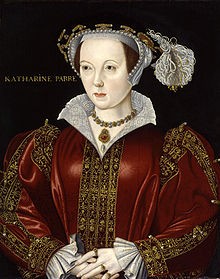 Katherine Parr was married three times before her final marriage. The most famous of all her marriages was her third to King Henry VIII of England. Most people know that she was the last wife—the one the rhyme says outlived him. Many forget that Anne of Cleves also survived the ever-changing moods of Henry Tudor.
Katherine Parr was married three times before her final marriage. The most famous of all her marriages was her third to King Henry VIII of England. Most people know that she was the last wife—the one the rhyme says outlived him. Many forget that Anne of Cleves also survived the ever-changing moods of Henry Tudor.
However, Katherine was the one to still be married to him when he died on January 28, 1547. She was left plenty of estates and it was the first of her marriages to bring her power and comfort as a widow. Henry left her a pension of £7,000 per year, making her the wealthiest noblewoman in all of England. It was definitely worth being a Dowager Queen of England just for that.
Novels and Books about Katherine Parr
 |  |  |
| The Lamentation of a Sinner Only $3.99 | Katherine Parr: Complete Works and Co... | Firebrand: A Novel Only $19.68 |
Katherine Parr Marries Sir Thomas Seymour
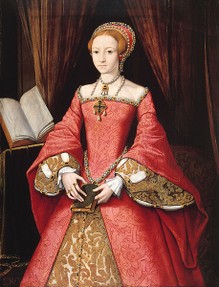 However, it wasn’t long until Katherine chose to remarry. It is no lie that there were probably many men who wanted to marry the dowager queen. After all, she was extremely wealthy and was the guardian of Lady Elizabeth Tudor, Henry VIII’s daughter with Anne Boleyn. Katherine chose to follow her heart.
However, it wasn’t long until Katherine chose to remarry. It is no lie that there were probably many men who wanted to marry the dowager queen. After all, she was extremely wealthy and was the guardian of Lady Elizabeth Tudor, Henry VIII’s daughter with Anne Boleyn. Katherine chose to follow her heart.
Thomas Seymour was the man that Katherine had wanted to marry before her marriage to Henry VIII in 1543. She had grown to love him during her time at court, which she only started to attend due to her second husband, Lord Latimer. The 31-year-old didn’t really have a choice, though. Once the King of England had decided on his next bride, there was no legitimate reason to say no. She probably feared that saying no would end her life—Henry VIII had developed a proven track record for going through women quickly. After his first marriage of over 20 years, Henry had never lasted more than three years with one women; and had mistresses during those marriages!
After his death, Katherine went back to the man that she loved. By this time, it is likely that Thomas Seymour was looking for a more powerful marriage. While the dowager queen would be good for him, marrying the daughter of the late king would be even better; he could become King of England. Thomas likely married Katherine just because she was the guardian of Elizabeth Tudor. He could then use his charm on his wife’s step-daughter.
Katherine Parr Becomes Guardian to Lady Jane Grey
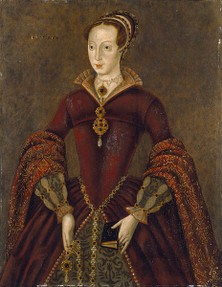 Elizabeth was not the only ward of the dowager queen. In another attempt for power, Thomas Seymour bought the guardianship of Lady Jane Grey, the granddaughter of Charles Brandon and Mary Tudor, sister of Henry VIII. Jane was now fourth in line for the throne, with Elizabeth the second in line. It was the perfect power play for him.
Elizabeth was not the only ward of the dowager queen. In another attempt for power, Thomas Seymour bought the guardianship of Lady Jane Grey, the granddaughter of Charles Brandon and Mary Tudor, sister of Henry VIII. Jane was now fourth in line for the throne, with Elizabeth the second in line. It was the perfect power play for him.
Katherine likely didn’t mind. She was always caring and probably wanted her own children. She had proven to care for her step-children after becoming the guardian for Lord Latimer’s daughter, Margaret, after his death. She was wealthy enough, too, to be able to care for two teenage daughters. They were both raised Protestant as well and this was the faith she supported.
Katherine Parr Becomes Pregnant for the First Time
She may have considered herself barren by this part. After three marriages, Katherine had never been pregnant. It was a wife’s duty to have children, especially sons for a queen consort, but she had failed with three different men. By the time she married Thomas Seymour, she probably thought that the time was up; another reason to welcome Elizabeth and Jane into her home and raise them as she would her own.
However, by March 1548, Katherine Parr found herself pregnant. This was when many of the problems started. Thomas and Elizabeth had started some type of relationship. It is unclear whether Elizabeth wanted anything to do with Thomas and whether he forced herself on her, but at one point Katherine found the two together in some type of embrace. Elizabeth was sent away before her reputation could be harmed completely.
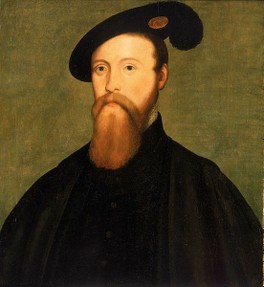 Katherine knew that Thomas Seymour was taking mistresses during her pregnancy but she never said anything negative about it. Maybe she had accepted that he would never be faithful to her and cared more about the life of her unborn child. She finally gave birth to the only child that she would have, a daughter, on August 30 and named her Mary, after her other step-daughter from Henry, Mary Tudor.
Katherine knew that Thomas Seymour was taking mistresses during her pregnancy but she never said anything negative about it. Maybe she had accepted that he would never be faithful to her and cared more about the life of her unborn child. She finally gave birth to the only child that she would have, a daughter, on August 30 and named her Mary, after her other step-daughter from Henry, Mary Tudor.
Poor Mary only seems to have lived to about two years old. Thomas Seymour was arrested and executed for treason about a year after her birth and she went to live with Katherine Willoughby, Duchess of Suffolk. It is such a shame that she never got to meet her mother.
What Do You Know About Thomas Seymour?
 |  |
| The Life Of Sir Thomas Seymour, Knigh... Only $27.69 | The Six Wives of Henry VIII |
The Death and Burial of Katherine Parr, Queen Dowager
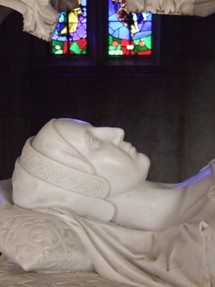 Katherine died in the early morning hours of September 5 and was buried the very same day. The chief mourner at her funeral was Lady Jane Grey and the sermon was preached by reformist Bible translator, Miles Coverdale. Katherine would have likely approved both of these people having such prominent positions. She was buried somewhere in Sudeley Castle.
Katherine died in the early morning hours of September 5 and was buried the very same day. The chief mourner at her funeral was Lady Jane Grey and the sermon was preached by reformist Bible translator, Miles Coverdale. Katherine would have likely approved both of these people having such prominent positions. She was buried somewhere in Sudeley Castle.
While that seems like the end to the story, there is more. In 1782, an alabaster block was found while Sudeley Castle was being investigated around the chapel ruins. The ladies who found the block believed that it was just part of a monument so opened the area of the ground. It was then that they found the coffin with the inscription:
Here lyeth Queen Katheryne Wife to Kinge Henry the VIII and
The wife of Thomas Lord of Sudely high admv…of Englond and
Vnkle to Kyng Edward VI.
When holes were cut into the coffin and her remains were unwrapped, it was clear that Katherine’s body had been wrapped in wax cloth because it was completely preserved. However, the remains have now decayed since the women never sealed the coffin again. Her remains disintegrated when it came to investigating them due to the decay. She now has a tomb fit for her title in St. Mary's Church. Sudeley Castle.
Image of Katherine Parr's tomb courtesy of jennicatpink at Flickr.
All other images in the public domain.
Also on September 5 in History
Other events that happened on the same day as Katherine Parr's death over the years
Second child of Edward I of England and Eleanor of Castile, named Katherine, died in 1264. She was no more than three months old and was buried at Westminster Abbey. Her younger sister, Joan, born and died a year later joined her.
Isabel Neville was born on this day in 1451. She was the elder daughter of Richard Neville, Earl of Warwick--well known as the Kingmaker. She married Edward IV's brother, George Plantagenet, and died after childbirth in 1476.
You might also like
England Under the Tudors: Would King Edward VI Have Been a Goo...Edward VI reigned between 1547 and 1553 when he was just a boy. It's hard to ...
Lady Jane Boleyn: Vindictive Woman or Pawn in a Plot?Jane Boleyn is known for her part in bringing down the Boleyn faction. How mu...
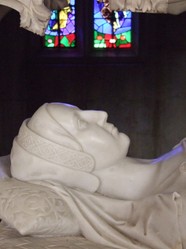



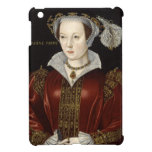

 Alternate History: What If Mary I Had a Child?on 01/26/2015
Alternate History: What If Mary I Had a Child?on 01/26/2015
 Francis II of France Dies: Mary, Queen of Scots Returns Homeon 12/05/2014
Francis II of France Dies: Mary, Queen of Scots Returns Homeon 12/05/2014
 Does Writedge Pay? Payment Proofon 12/03/2014
Does Writedge Pay? Payment Proofon 12/03/2014
 Alternate History: What If Lady Jane Grey Was Not Deposed?on 11/11/2014
Alternate History: What If Lady Jane Grey Was Not Deposed?on 11/11/2014
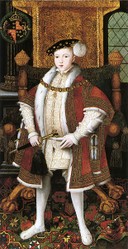
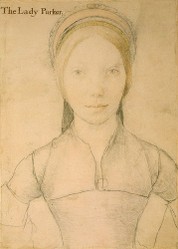
Comments
My guess is that they wouldn't have answered that she wasn't a 14 year old girl. She was Lady Elizabeth Tudor, the future Queen of England.
It really is criminal. Such a shame to end a tragic story.
It is crazy how it was considered normal and fine back then. Although, maybe they would think it is crazy how we react now.
It's downright criminal that the ladies never sealed the coffin again.
It shows how times have changed. If a 40 year old man tried to force himself on a 14 year old girl now, we'd have more to say than he was merely engaging in an ambitious power play.